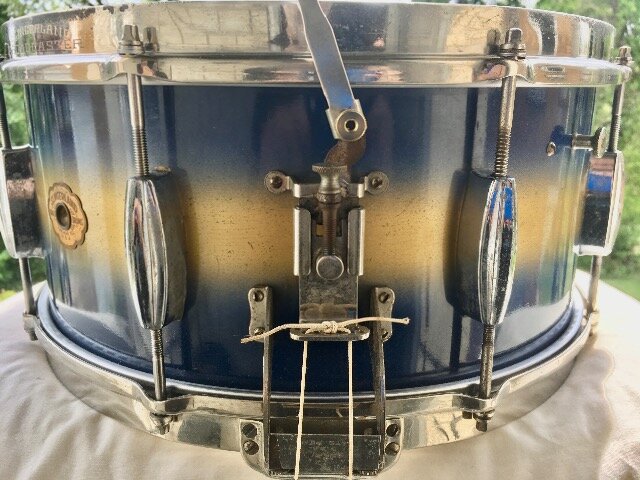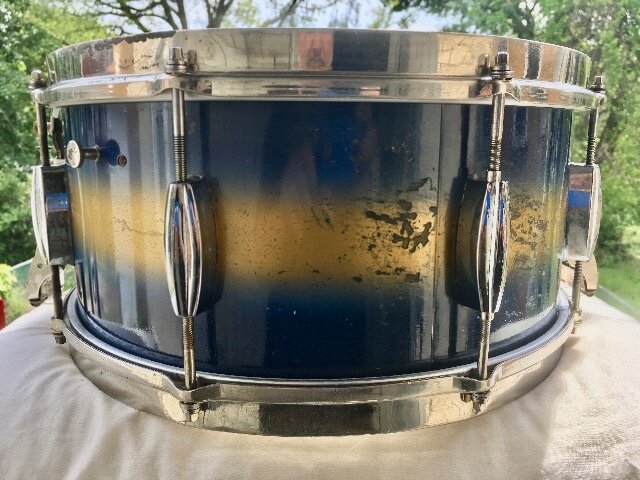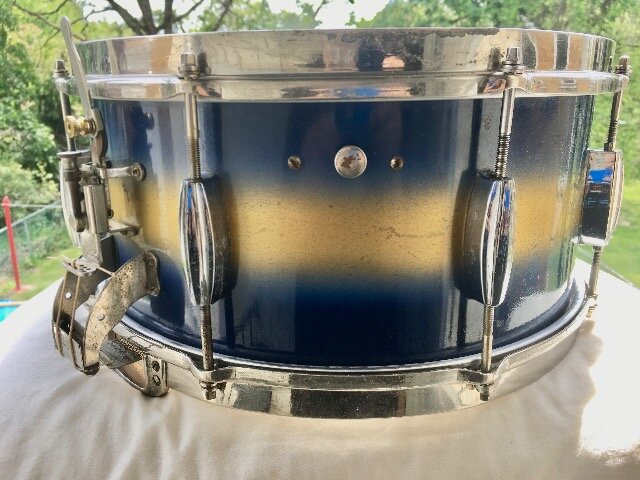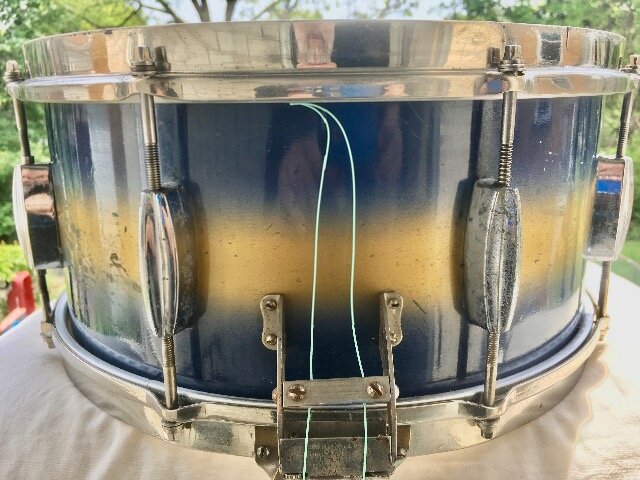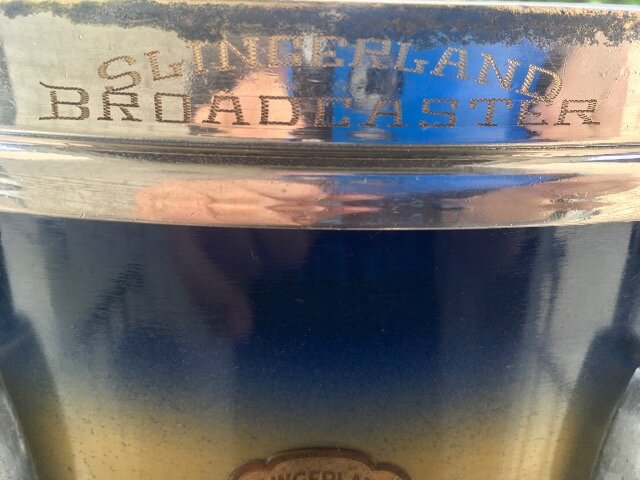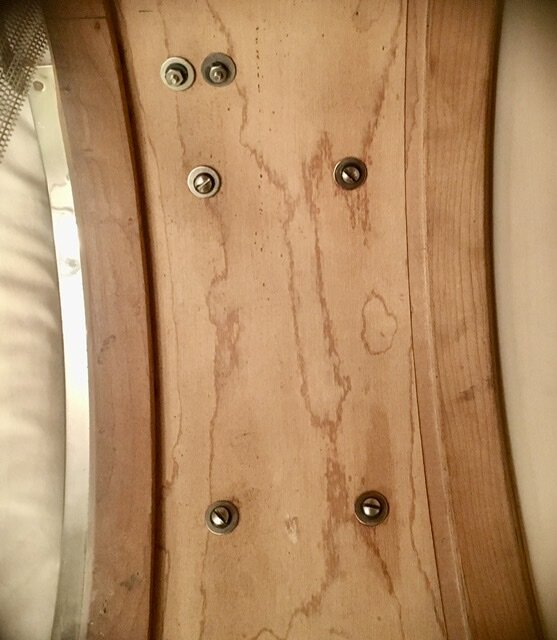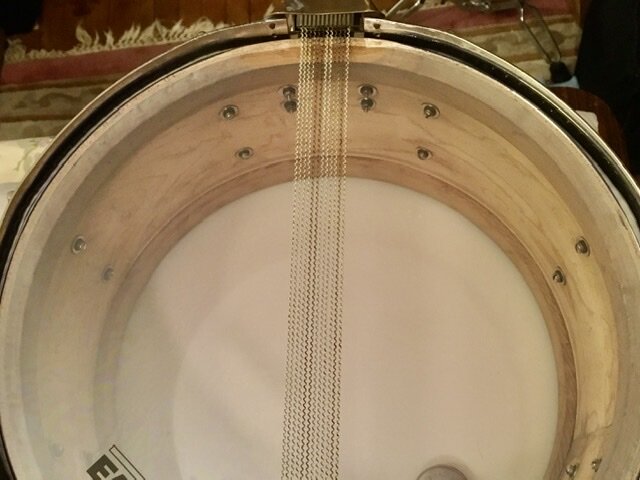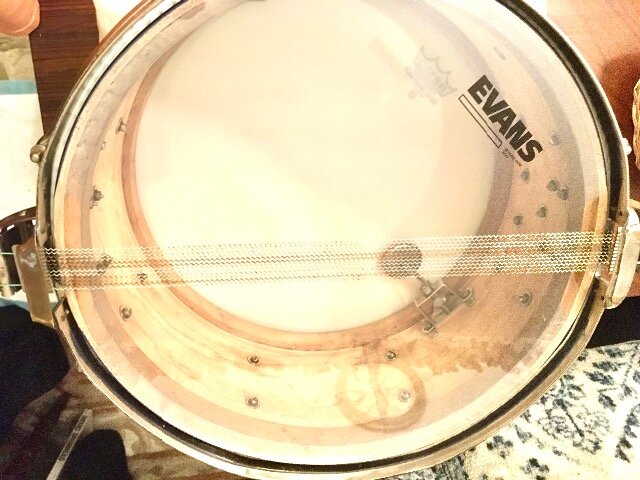In 1934 the Slingerland Drum Company introduced the Broadcaster snare drum model. This snare was a radical change from their previous snare drum designs. The transition stepped away from the typical tubular lug that was used by almost all drum manufactures at this time.
The beautiful new lug screamed “Art Deco“, a streamlined design that was equipped with two directly tapped threads to accommodate the tension rods. The most innovative part of the Broadcaster was the complete strainer system, a unique extended snare mechanism. Added to the three point throw off were two bridge extensions to accept 16” extended snare wires and thumb wheel adjusters to adjust snare wire tension. This Broadcaster snare mechanism was as sensitive and efficient as a parallel strainer system.
Unfortunately, Gretsch had a drum model with a similar name. Their Broadcaster was spelled with a K instead of a C. When Gretsch realized the similarities, they felt it was an infringement on their own drum products and rights. A lawsuit ensued and the court ruled in favor of Gretsch, so Slingerland had to drop the Broadcaster name, so it was only produced from 1934 to 1935. This unfortunate situation later became a blessing in disguise and set the wheels in motion for the production of one of the most iconic snare drums in history, the Slingerland “Radio King” in 1936. Ironically, the Gretsch company may just be partly responsible for helping to create Slingerland’s most famous drum line.
Ace Drummer Man,” Gene Krupa was Slingerland’s premier endorser. He was a major contributor to the design of the Radio King drum line. He played Slingerland “Radio Kings” exclusively, as the jazz scene exploded with immense popularity and success. Slingerland’s collaboration with Gene Krupa would lead to over four decades of huge success and sales.
The limited production of the Slingerland Broadcaster snare drum has made them extremely rare and highly sought after by vintage collectors and players alike.
Here is a rare example of a 6.5”x14”, Solid one-ply maple shell "Broadcaster" snare that was painted with a Tri-Tone (three color) Lacquer Duco finish combination; blue, silver and gold. The contrast of these colors can be vividly seen in the middle of the shell. Most all of the drums of this era made with the duco lacquer were either just two-tone or mono-tone. The Broadcasters snare drums were also available with pearls and sparkling plastic finishes. There are very few examples of these elusive Duco Broadcasters out there in the vintage drum world, especially with the tri-tone duco lacquer finish.

